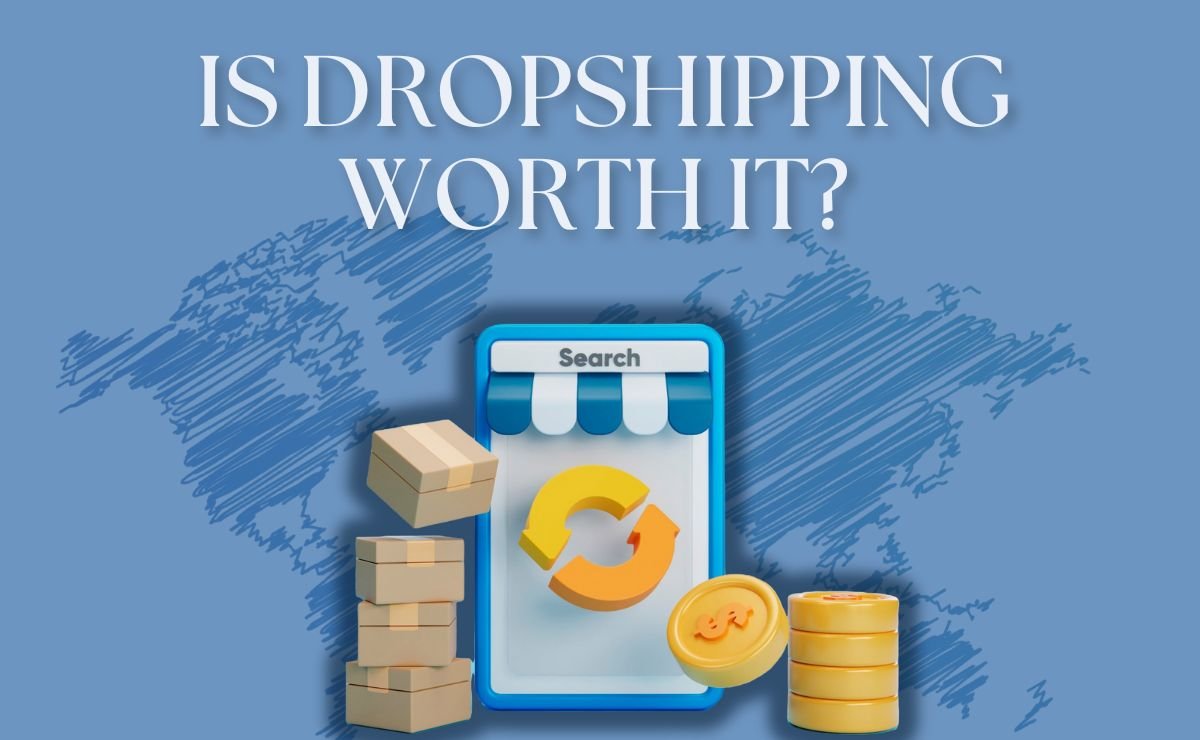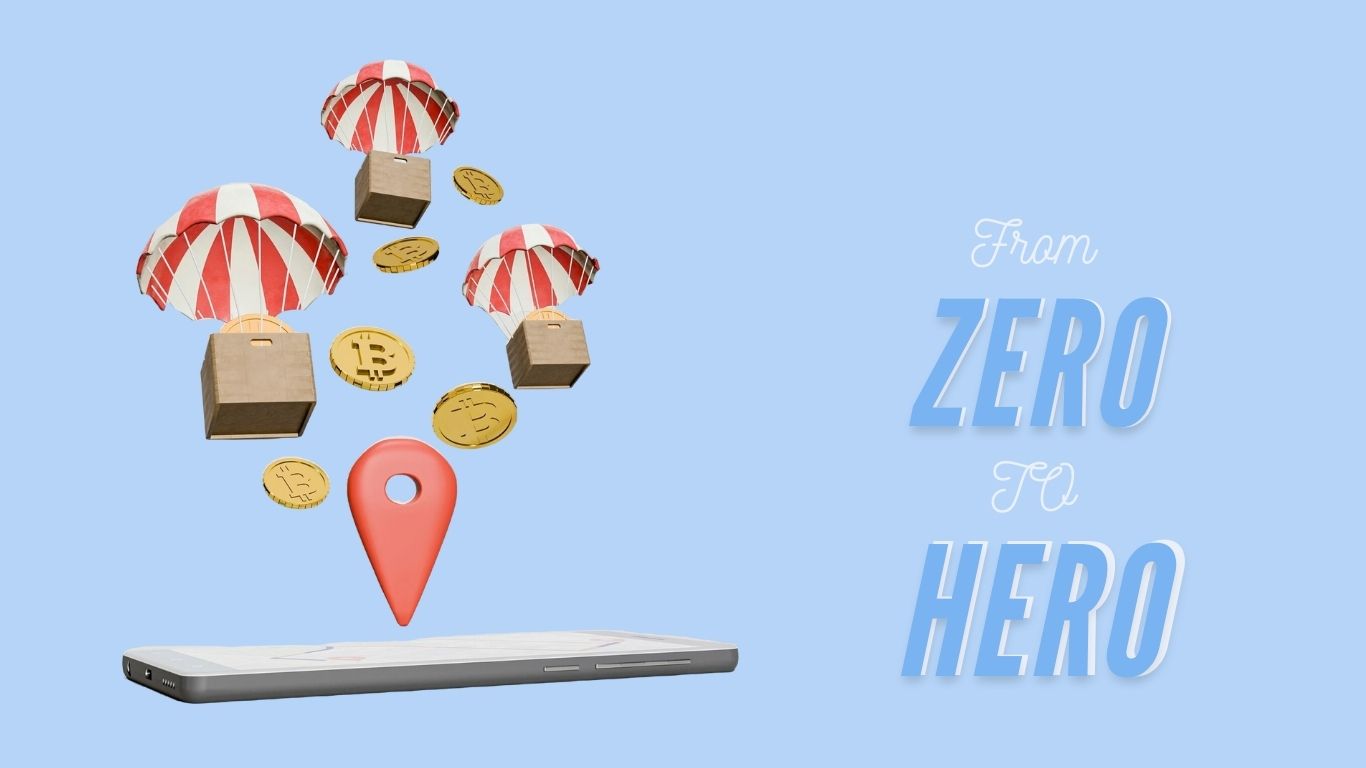
Is Dropshipping Worth It? Exploring the Pros and Cons
- 2024-12-24
-
0

Dropshipping is a business model where an online retailer does not keep any inventory of the products they sell. Instead, when a customer places an order, the retailer purchases the item from a third-party supplier who then ships it directly to the customer. This means that the retailer never has to handle or store any inventory, making it a convenient and low-risk business model.
The process of dropshipping works as follows:
1. The retailer sets up an online store and lists products from various suppliers.
2. A customer places an order on the retailer's website and pays for the product.
3. The retailer then forwards the order and customer details to the supplier.
4. The supplier packages and ships the product directly to the customer.
5. The retailer keeps the difference between the price they charged the customer and the price they paid to the supplier as profit.
There are many successful dropshipping businesses that have thrived using this model. One example is Oberlo, a platform that allows entrepreneurs to easily import products from suppliers into their Shopify stores. Another example is AliExpress, a popular online marketplace where retailers can find a wide range of products to sell through dropshipping.
The Advantages of Dropshipping: Why it's a Popular Business Model
One of the main advantages of dropshipping is its low startup costs. Since you don't need to invest in inventory upfront, you can start a dropshipping business with minimal capital. This makes it an attractive option for entrepreneurs who want to start an online business but have limited funds.
Another advantage of dropshipping is that it eliminates the need for inventory management. With traditional retail models, you would need to purchase and store inventory, which can be costly and time-consuming. With dropshipping, you don't have to worry about stocking or managing inventory, as your suppliers take care of that for you.
Dropshipping also offers flexibility in terms of location and time. Since you don't need to physically handle the products, you can run your business from anywhere in the world as long as you have an internet connection. Additionally, dropshipping allows you to set your own schedule and work at your own pace, making it a great option for those who value freedom and flexibility.
Furthermore, dropshipping provides a wide range of products to sell. With access to suppliers from all over the world, you can choose from thousands of products to add to your online store. This allows you to cater to different niches and target specific customer segments, increasing your chances of success.
The Disadvantages of Dropshipping: Potential Risks and Challenges
While dropshipping offers many advantages, it also comes with its fair share of disadvantages and challenges. One of the main drawbacks is the limited control over product quality and shipping. Since you are relying on suppliers to fulfill orders, there is a risk that the products may not meet your customers' expectations or that they may be delayed in shipping. This can lead to negative reviews and damage your reputation as a retailer.
Another challenge of dropshipping is the high level of competition. Since the barrier to entry is low, there are many other entrepreneurs who are also starting dropshipping businesses. This means that you will need to find ways to differentiate yourself from the competition and attract customers to your store.
Additionally, dropshipping typically has low profit margins. Since you are selling products at a markup from the wholesale price, your profit per sale is often small. This means that you will need to sell a large volume of products in order to make a significant profit.
Lastly, dropshipping requires a high level of dependence on suppliers. If a supplier runs out of stock or goes out of business, it can disrupt your business operations and leave you scrambling to find an alternative supplier. It's important to have backup suppliers in place and to regularly communicate with your existing suppliers to ensure a smooth supply chain.
Cost Considerations: How Much Does Dropshipping Really Cost?
While dropshipping has low startup costs compared to traditional retail models, there are still some expenses to consider. The initial investment will include setting up an online store, which can range from a few hundred dollars to a few thousand dollars depending on the platform and design you choose. You will also need to invest in marketing and advertising to attract customers to your store.
In terms of ongoing expenses, you will need to pay for a domain name and web hosting for your online store. This typically costs around $10-$20 per month. You may also need to invest in software or apps to help with inventory management, order processing, and customer service. These can range from free options to several hundred dollars per month depending on the features and functionality you require.
It's important to be aware of hidden costs when dropshipping. For example, some suppliers may charge a fee for dropshipping their products or require you to purchase a minimum quantity of items. Additionally, you may incur shipping costs when fulfilling orders, especially if you offer free shipping to your customers. It's important to factor in these costs when pricing your products and calculating your profit margins.
Finding the Right Products to Sell: Tips and Strategies for Success
Choosing the right products to sell is crucial for the success of your dropshipping business. One strategy is to focus on a specific niche market. By targeting a specific audience with unique needs or interests, you can differentiate yourself from the competition and build a loyal customer base. Research different niches and identify products that have high demand but low competition.
Product research tools can be helpful in finding profitable products to sell. These tools provide data on product popularity, competition, and profitability, allowing you to make informed decisions about which products to add to your store. Some popular product research tools include Jungle Scout, Helium 10, and SaleHoo.
Analyzing market trends is another important aspect of finding the right products to sell. Stay up to date with the latest trends and consumer preferences in your target market. Look for products that are currently in high demand or have the potential to become popular in the future. This will help you stay ahead of the competition and ensure that you are offering products that customers want to buy.
Building a Strong Supplier Network: How to Find Reliable Partners
Finding reliable suppliers is crucial for the success of your dropshipping business. When choosing suppliers, there are several criteria to consider. First, look for suppliers who have a good reputation and positive reviews from other retailers. This will give you confidence in their ability to fulfill orders and provide quality products.
It's also important to consider the location of your suppliers. If you are targeting customers in a specific country or region, it may be beneficial to work with suppliers who are located in that area. This can help reduce shipping times and costs, as well as improve customer satisfaction.
There are several places where you can find suppliers for your dropshipping business. One option is to use online marketplaces such as AliExpress, Alibaba, or Oberlo. These platforms connect retailers with suppliers from all over the world and provide a wide range of products to choose from.
Another option is to attend trade shows or industry events where you can meet suppliers in person and establish relationships. This can be a great way to build trust and negotiate better terms with your suppliers.
When negotiating with suppliers, it's important to communicate your expectations clearly and establish a mutually beneficial relationship. Discuss pricing, shipping terms, and any other requirements you may have. It's also a good idea to ask for samples of the products you plan to sell to ensure their quality meets your standards.
Managing Inventory and Fulfillment: Best Practices and Tools
Efficiently managing inventory and fulfillment is essential for the smooth operation of your dropshipping business. One of the key aspects of this is order processing and tracking. When a customer places an order, it's important to forward the details to your supplier as quickly as possible to ensure timely fulfillment. You should also provide tracking information to your customers so they can monitor the progress of their orders.
Inventory management software can be a valuable tool for keeping track of your products and ensuring that you don't run out of stock. These tools allow you to track inventory levels, set up automatic reordering, and manage multiple suppliers. Some popular inventory management software options include TradeGecko, Skubana, and Ordoro.
When it comes to shipping options and costs, it's important to find a balance between affordability and speed. Offering free shipping can be a great way to attract customers, but it's important to factor in the cost of shipping when pricing your products. Consider working with multiple shipping carriers to find the best rates and options for your business.
Customer Service and Returns: How to Handle Common Issues
Providing excellent customer service is crucial for the success of your dropshipping business. When dealing with customer complaints, it's important to respond promptly and professionally. Address their concerns and offer solutions or alternatives whenever possible. This will help build trust and loyalty with your customers.
Handling returns and refunds can be challenging in a dropshipping business, as you don't physically handle the products. It's important to have clear policies in place regarding returns and refunds and communicate them clearly to your customers. Work closely with your suppliers to ensure that they have a return policy in place and can handle returns on your behalf.
Building customer loyalty is another important aspect of customer service in dropshipping. Offer incentives such as discounts or rewards programs to encourage repeat purchases. Provide personalized customer support and go above and beyond to exceed your customers' expectations. This will help build a strong relationship with your customers and encourage them to recommend your store to others.
Marketing and Advertising: How to Promote Your Dropshipping Business
Marketing and advertising are essential for driving traffic to your dropshipping store and generating sales. One effective strategy is social media marketing. Create accounts on popular social media platforms such as Facebook, Instagram, and Pinterest, and regularly post engaging content related to your products. Use targeted ads to reach your ideal customers and drive them to your store.
Influencer marketing can also be a powerful tool for promoting your dropshipping business. Identify influencers in your niche who have a large following and engage with their audience. Collaborate with them to promote your products through sponsored posts or giveaways. This can help increase brand awareness and attract new customers.
Paid advertising is another effective way to promote your dropshipping business. Platforms such as Google AdWords and Facebook Ads allow you to target specific keywords or demographics and display ads to potential customers. Set a budget for your advertising campaigns and regularly monitor their performance to ensure a positive return on investment.
Legal and Tax Considerations: Important Things to Know Before Starting
Before starting a dropshipping business, it's important to be aware of the legal and tax considerations involved. Depending on your location, you may need to register your business and obtain the necessary licenses or permits. Research the requirements in your jurisdiction and ensure that you comply with all applicable laws and regulations.
Sales tax is another important consideration in dropshipping. Depending on the location of your customers and suppliers, you may be required to collect and remit sales tax on their behalf. Consult with a tax professional or accountant to understand the sales tax requirements in your jurisdiction.
Intellectual property rights are also important in dropshipping. Ensure that you have the necessary permissions or licenses to sell certain branded products or use copyrighted material in your marketing materials. Violating intellectual property rights can lead to legal issues and damage your reputation as a retailer.
Is Dropshipping Right for You? Factors to Consider Before Making a Decision.
Before starting a dropshipping business, it's important to carefully consider whether it is the right business model for you. One factor to consider is your personal goals and preferences. Dropshipping offers flexibility and freedom, but it also requires hard work and dedication. Consider whether you are willing to put in the time and effort required to build a successful dropshipping business.
Your financial situation is another important factor to consider. While dropshipping has low startup costs compared to traditional retail models, there are still expenses involved. Consider whether you have the necessary funds to invest in setting up your online store, marketing your products, and managing ongoing expenses.
The time and resources available to you are also important considerations. Dropshipping requires regular communication with suppliers, order processing, customer service, and marketing activities. Consider whether you have the time and resources available to effectively manage these aspects of your business.
Lastly, consider your risk tolerance. Dropshipping comes with its fair share of risks and challenges, including limited control over product quality and shipping, high competition, low profit margins, and dependence on suppliers. Consider whether you are comfortable with these risks and whether you have a backup plan in case things don't go as planned.
Conclusion:
Dropshipping is a popular business model that offers many advantages, such as low startup costs, no inventory management, flexible location and time, and a wide range of products to sell. However, it also comes with its fair share of disadvantages and challenges, such as limited control over product quality and shipping, high competition, low profit margins, and dependence on suppliers.
Before starting a dropshipping business, it's important to carefully consider whether it is the right business model for you. Consider factors such as your personal goals and preferences, financial situation, time and resources available, and risk tolerance. By carefully considering these factors and taking the necessary steps to set up and manage your dropshipping business, you can increase your chances of success in this competitive industry.
like?









